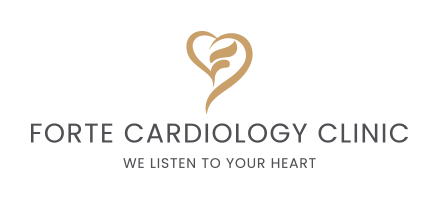Ischemic Heart Disease (IHD), also known as coronary artery disease or coronary heart disease, is a medical condition characterised by a reduced blood supply to the heart muscle. This occurs when the arteries that supply blood to the heart become narrowed or blocked, often due to the buildup of fatty deposits known as plaque.
Brief Overview Of The Cardiovascular System
Before delving into Ischemic Heart Disease (IHD), it’s essential to have a basic understanding of the cardiovascular system. This intricate network comprises the heart and blood vessels, working collaboratively to circulate blood throughout the body. The heart, a muscular organ, pumps blood. In contrast, blood vessels, including arteries, veins, and capillaries, form a vast transportation system facilitating the flow of oxygen and nutrients to various tissues and organs.
The role of blood vessels and coronary arteries
Blood vessels play a critical role in maintaining cardiovascular health. Arteries carry oxygen-rich blood away from the heart to the body’s tissues, while veins return oxygen-depleted blood to the heart. Within this network, the coronary arteries hold particular significance. These arteries supply the heart muscle with the oxygen and nutrients it needs to function optimally. When these arteries become obstructed or narrowed due to plaque buildup, Ischemic Heart Disease results.
What Causes Ischemic Heart Disease
Ischemic Heart Disease occurs when the coronary arteries, responsible for nourishing the heart, become wholly or partially blocked. This blockage impedes the normal blood flow, decreasing oxygen supply to the heart muscle. The primary cause of Ischemic Heart Disease is atherosclerosis, a condition characterised by the accumulation of cholesterol, fatty deposits, and other substances on the inner walls of arteries, forming plaque.
Other factors contributing to the development of Ischemic Heart Disease include hypertension (high blood pressure), diabetes, smoking, and a sedentary lifestyle. As plaque accumulates over time, it can rupture, causing blood clots that may further obstruct blood flow. Understanding these causes is crucial for preventing and effectively managing Ischemic Heart Disease, emphasising the importance of a healthy lifestyle and proactive cardiovascular care.
Risk Factors for Ischemic Heart Disease
Learning about modifiable and non-modifiable risk factors empowers individuals to make informed decisions about their lifestyle, enabling effective prevention and management of Ischemic Heart Disease.
Modifiable Risk Factors
Lifestyle Choices (Diet, Physical Activity, Smoking)
Diet – Consuming a diet high in saturated and trans fats, cholesterol, and sodium can contribute to the development of Ischemic Heart Disease. A diet rich in fruits, vegetables, and whole grains while low in processed foods can help mitigate this risk.
Physical Activity – Insufficient physical activity is a significant risk factor. Regular exercise contributes to weight management, lowers blood pressure, and improves cardiovascular health.
Smoking – Tobacco smoke contains harmful chemicals that damage blood vessels and can accelerate the progression of atherosclerosis. Quitting smoking is a crucial step in reducing the risk of Ischemic Heart Disease.
Obesity and Overweight
Excess body weight, especially around the waist, is linked to increased cholesterol levels, hypertension, and insulin resistance, all of which contribute to Ischemic Heart Disease. Maintaining a healthy weight through a balanced diet and regular exercise is vital.
Hypertension
High blood pressure forces the heart to work harder, leading to the thickening of artery walls and an increased risk of atherosclerosis. Lifestyle modifications, including a low-sodium diet and medication as prescribed, are essential in managing hypertension and reducing the risk of Ischemic Heart Disease.
Diabetes
Diabetes can damage blood vessels, making individuals more susceptible to atherosclerosis. Managing blood sugar levels through medication, lifestyle changes, and regular monitoring is crucial in preventing complications, including Ischemic Heart Disease.
Non-modifiable Risk Factors
Age
The risk of Ischemic Heart Disease increases with age. As individuals grow older, the cumulative effects of lifestyle choices and genetic factors can contribute to the development of atherosclerosis. Regular health check-ups become increasingly important as one age.
Gender
Men generally face a higher risk of Ischemic Heart Disease compared to premenopausal women. However, after menopause, the risk for women increases, emphasising the need for tailored preventive measures based on gender and age.
Genetics and Family History
Genetic factors play a role in predisposing individuals to Ischemic Heart Disease. A family history of heart disease, mainly if it occurred at an early age, can increase an individual’s susceptibility. Understanding family medical history aids in proactive risk management and early intervention.
Signs and Symptoms
Recognising these signs and symptoms is crucial for prompt diagnosis and intervention. It’s important to note that symptoms may vary among individuals, and some may experience atypical manifestations.
Chest Pain (Angina)
One of the hallmark symptoms of Ischemic Heart Disease (IHD) is chest pain or discomfort, often referred to as angina. This sensation can vary from mild to severe and may feel like pressure, squeezing, fullness, or pain in the chest. Angina typically occurs during physical activity or emotional stress when the heart’s demand for oxygen increases, highlighting the compromised blood supply to the heart muscle.
Shortness of Breath
Ischemic Heart Disease can lead to reduced cardiac function, causing shortness of breath even during mild physical exertion. This symptom, known as dyspnea, occurs as the heart struggles to pump blood efficiently, leading to inadequate oxygen supply to the body. Shortness of breath may also accompany chest pain as a result of IHD.
Fatigue and Weakness
Individuals with Ischemic Heart Disease often experience persistent fatigue and weakness. The compromised blood flow to the heart muscle hampers its ability to pump blood effectively, reducing oxygen delivery to other organs and tissues. This can result in an overall feeling of tiredness and weakness.
Silent Ischemia
Silent ischemia is a unique aspect of Ischemic Heart Disease where individuals experience inadequate blood flow to the heart without overt symptoms like chest pain. This form of ischemia is particularly concerning as affected individuals may not realise the presence of a problem, delaying diagnosis and treatment. Even without noticeable symptoms, silent ischemia can be detected through diagnostic tests, emphasising the importance of regular health check-ups for early detection.
Diagnosis and Screening for Ischemic Heart Disease
These diagnostic tests are crucial in confirming the diagnosis of Ischemic Heart Disease, determining its severity, and guiding the development of an appropriate treatment plan.
Medical History and Physical Examination
A thorough medical history and physical examination are the initial steps in diagnosing Ischemic Heart Disease (IHD). Healthcare professionals will inquire about the patient’s symptoms, risk factors, and family history of cardiovascular diseases. During the physical examination, they may listen to the heart, check blood pressure, and assess other vital signs to gather valuable information about the patient’s cardiovascular health.
Electrocardiogram (ECG or EKG)
An Electrocardiogram is a fundamental diagnostic tool for assessing heart health. It records the heart’s electrical activity, helping identify irregularities in the heart’s rhythm and detecting signs of inadequate blood flow. Changes in the ECG pattern, such as ST-segment depression or elevation, can indicate the presence of Ischemic Heart Disease.
Blood Tests
Blood tests provide valuable information about various factors related to heart health. Elevated levels of cardiac enzymes, such as troponin and creatine kinase, can indicate damage to the heart muscle. Lipid profiles, measuring cholesterol levels, help assess the risk of atherosclerosis, a primary cause of IHD.
Imaging Tests (Angiography, CT Scan, MRI)
Angiography – This procedure involves injecting a contrast dye into the coronary arteries and capturing X-ray images. It helps visualise any blockages or narrowed areas in the arteries, providing a detailed map of blood flow to the heart.
CT Scan (Computed Tomography) – A coronary CT angiography can produce detailed images of the heart and blood vessels, offering insights into the presence and extent of arterial blockages.
MRI (Magnetic Resonance Imaging) – Cardiac MRI can provide detailed images of the heart’s structure and function. It is particularly useful in assessing blood flow and identifying areas of reduced perfusion due to ischemia.
Prevention and Lifestyle Changes
A holistic approach to prevention involves a combination of healthy lifestyle choices and, when necessary, medications. Adhering to these preventive measures reduces the risk of Ischemic Heart Disease and contributes to overall cardiovascular well-being.
Importance of a Heart-Healthy Diet
Maintaining a heart-healthy diet is crucial in preventing Ischemic Heart Disease (IHD). Emphasise a diet rich in fruits, vegetables, whole grains, and lean proteins while limiting saturated fats, trans fats, cholesterol, and sodium. Opt for foods that support heart health, such as fatty fish high in omega-3 fatty acids, and consider consulting with a healthcare professional or a nutritionist for personalised dietary guidance.
Regular Physical Activity and Exercise
Engaging in regular physical activity and exercise significantly contributes to cardiovascular health. Aim for at least 150 minutes of moderate-intensity aerobic exercise or 75 minutes of vigorous-intensity exercise per week. Exercise helps maintain a healthy weight, lowers blood pressure, and improves overall heart function. Consult with a healthcare provider before starting a new exercise regimen, mainly if pre-existing health conditions exist.
Smoking Cessation
Smoking is a major risk factor for Ischemic Heart Disease, and quitting is one of the most impactful lifestyle changes. Smoking damages blood vessels accelerates the development of atherosclerosis, and increases the risk of blood clots. Seek support from healthcare professionals, support groups, or smoking cessation programs to quit smoking effectively.
Managing Stress
Chronic stress can contribute to the development and progression of Ischemic Heart Disease. Adopt stress management techniques such as mindfulness, meditation, deep breathing exercises, or activities that bring joy and relaxation. Establishing a healthy work-life balance and seeking support from friends, family, or mental health professionals can also be beneficial.
Medications for Prevention
In some instances, medications may be prescribed to manage specific risk factors and prevent Ischemic Heart Disease. Common medications include:
Statins – To lower cholesterol levels and reduce the risk of atherosclerosis.
Antiplatelet agents – To prevent blood clot formation.
Antihypertensive medications – To control high blood pressure.
Anti-diabetic medications – To manage diabetes and reduce cardiovascular risk.
Take medications as prescribed and attend regular follow-up appointments with healthcare specialist to monitor their effectiveness and adjust the treatment plan.
Treatment Options
These treatment options are often combined to address Ischemic Heart Disease’s diverse aspects. Treatment choice depends on the severity of the condition, the presence of symptoms, and individual health considerations.
Lifestyle Interventions
Lifestyle interventions form the cornerstone of Ischemic Heart Disease (IHD) management. Adopting heart-healthy habits can significantly improve outcomes and quality of life. Key lifestyle changes include:
Dietary Modifications – Embrace a diet rich in fruits, vegetables, whole grains, and lean proteins. Limit saturated fats, trans fats, cholesterol, and sodium.
Regular Exercise – Engage in regular physical activity, aiming for at least 150 minutes of moderate-intensity aerobic exercise per week.
Smoking Cessation – Quitting smoking is paramount in reducing the progression of IHD and preventing further complications.
Stress Management – Implement stress-reducing techniques such as meditation, mindfulness, and relaxation exercises.
Medications
Antiplatelet Drugs – Medications like aspirin or clopidogrel may be prescribed to prevent blood clot formation and reduce the risk of heart attacks.
Statins – Statins lower cholesterol levels, reducing plaque buildup in the arteries. They play a crucial role in managing atherosclerosis and preventing complications.
Beta-blockers – Beta-blockers help lower blood pressure and reduce the heart’s workload, alleviating symptoms and preventing further damage to the heart.
Invasive Procedures
Angioplasty and Stenting – Angioplasty involves using a catheter with a balloon to widen narrowed arteries. A stent, a small mesh tube, may be placed to keep the artery open. This procedure improves blood flow to the heart and is often used in acute situations or as a planned intervention.
Coronary Artery Bypass Grafting (CABG) – CABG is a surgical procedure where a healthy blood vessel, often from the leg or chest, is grafted to bypass blocked or narrowed coronary arteries. This rerouting improves blood flow to the heart. CABG is considered in cases where lifestyle changes and medications alone are insufficient.






